Affiliate links on Android Authority may earn us a commission. Learn more.
Clue period and ovulation tracking app guide: Everything you need to know
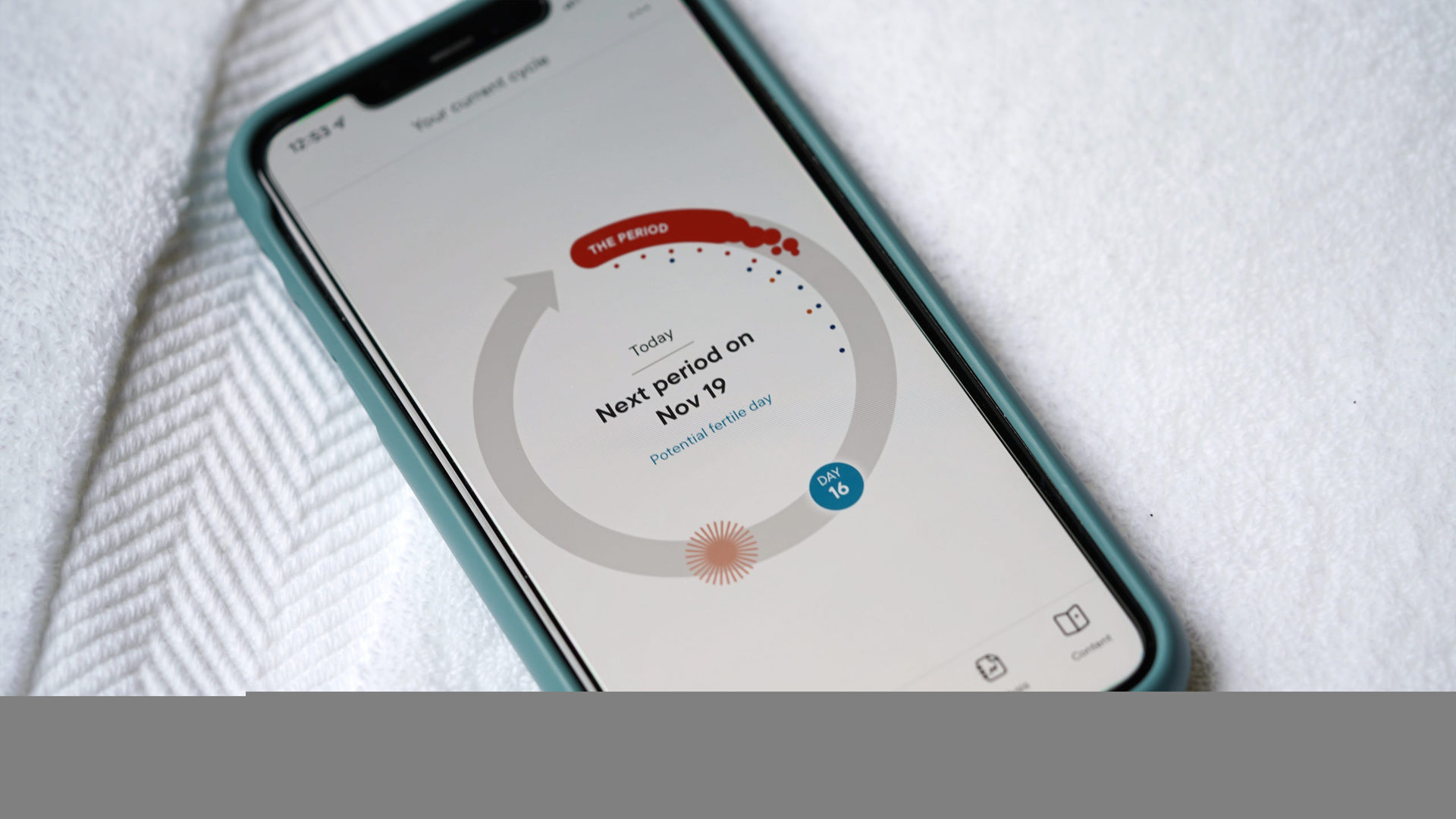
Even the most regular menstrual cycles can be a bit of a minefield. The Clue period and ovulation tracking app helps pare down the mystery with tools and info that make periods more manageable. This extensive guide covers everything you need to know about Clue.
What is the Clue cycle and period tracker app?
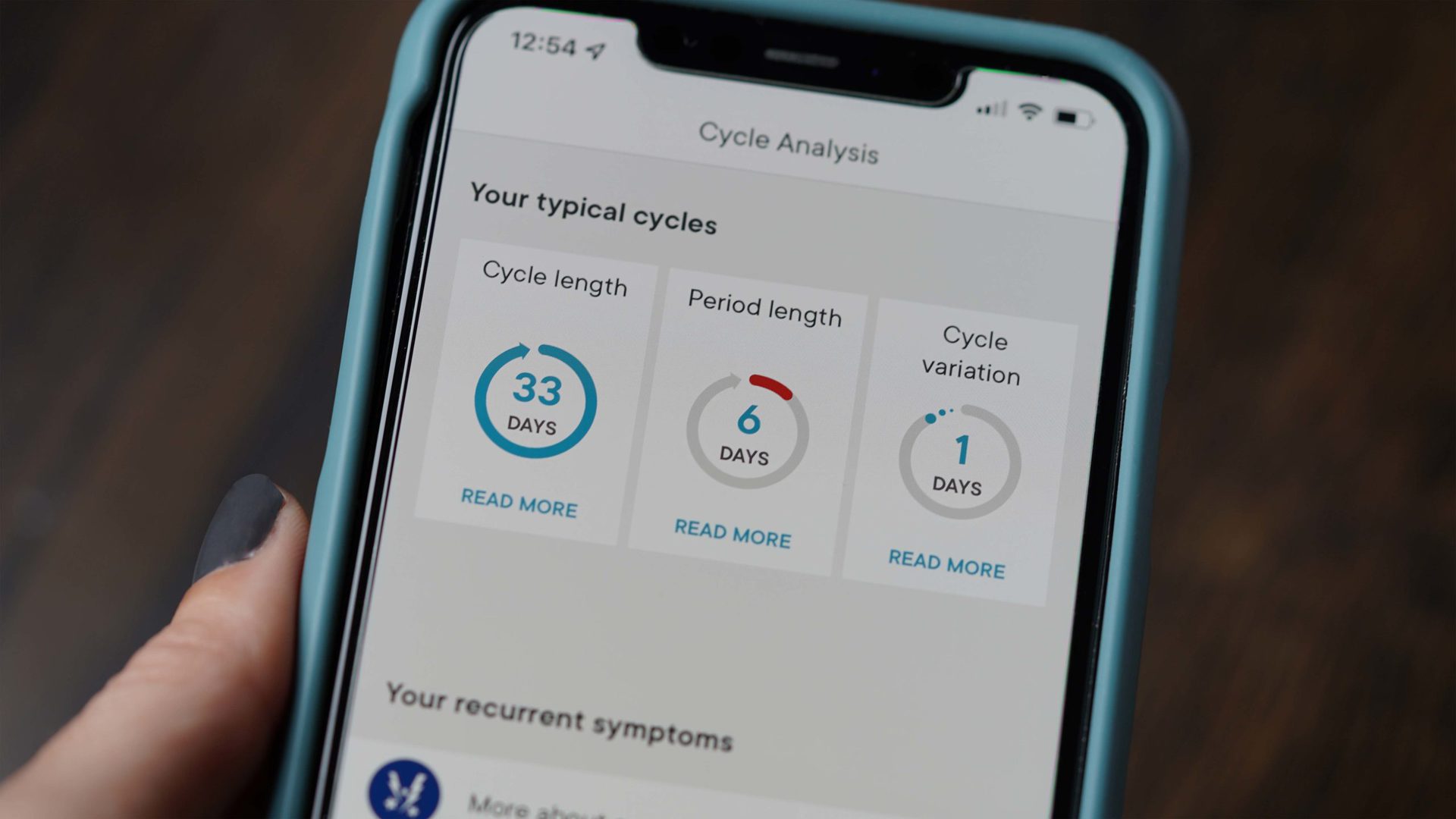
Whether you’ve always had an irregular cycle, you’ve recently changed birth control, or you’re planning for a family, Clue can help you better understand your body (and better understand your flow). The female-led, Berlin-based app uses the most up-to-date science for predicting cycles and tracking ovulation. If you’re typically a tampon-less trainwreck when your period hits, this is the app for you. Not only does Clue keep your cycle history organized, but it also uses your data to predict the start date of your upcoming period. This means knowing what’s coming and when.
Most importantly, Clue is developed by a team that cares about women’s health and proper scientists who understand not all cycles are the same. That’s why it tracks over 30 cycle-related symptoms and even lets you add custom symptoms, so you can collect the most important data for your specific body. This can be especially helpful for individuals with irregular periods or for those managing polycystic ovary syndrome (PCOS). The app also offers in-depth cycle analysis and extensive educational content, including LGBTQIA+ resources.
See also: The best health apps for Android
What does Clue track?
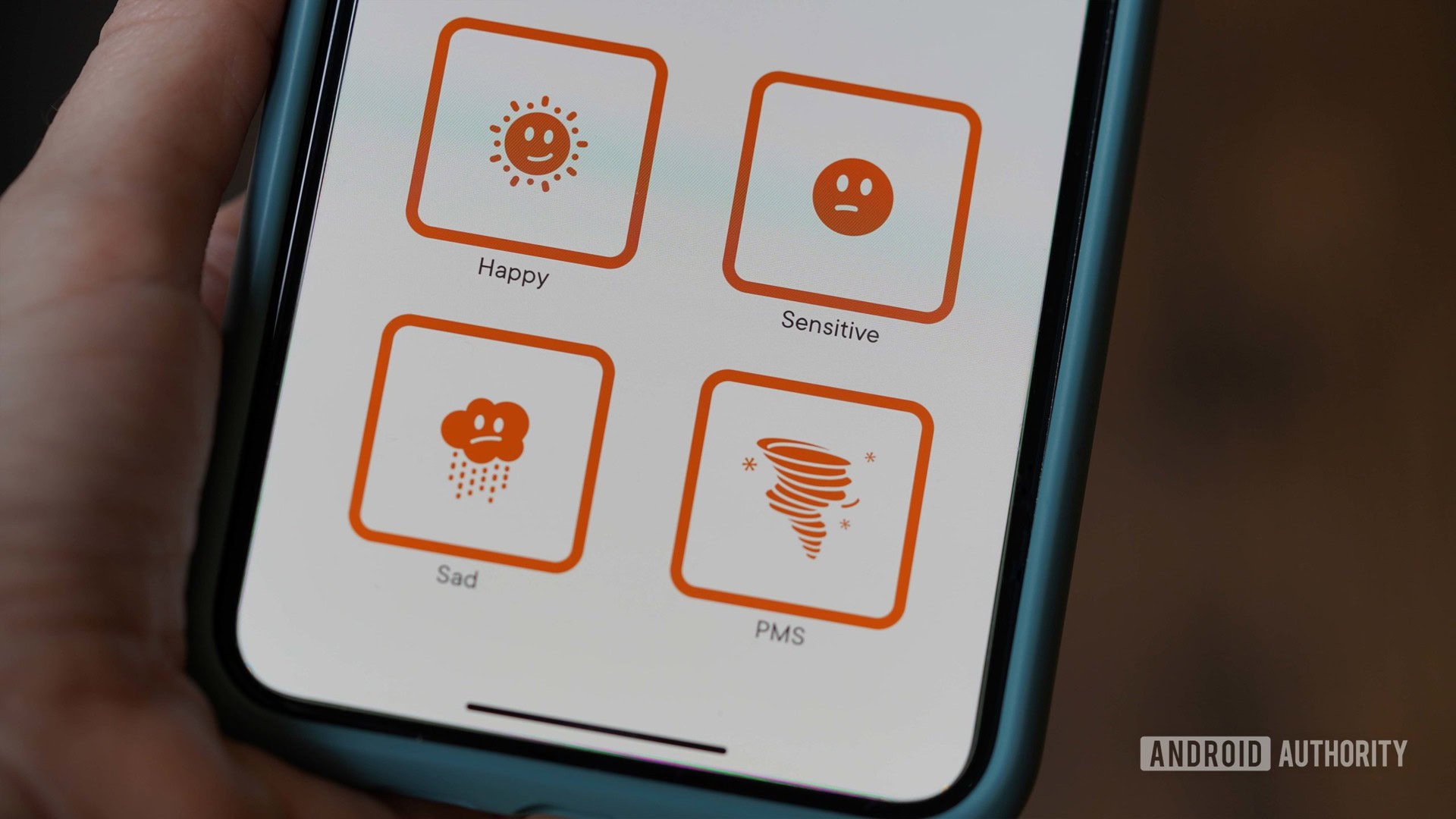
First and foremost, Clue is a cycle and period tracker. Users log their periods in a convenient calendar and can refer back to the flows of previous months. However, Clue doesn’t just record bleeding. It also tracks a variety of symptoms and data points to help users gain insight into their bodies. From moods to pain, sleep to sex, Clue helps you identify patterns and learn how your cycle is connected to your overall health.
The following is a complete list of the tracking categories and subgroups available in Clue:
- Period: Bleeding, collection method
- Body: Craving, digestion, fluid, hair, pain, skin, stool, temperature, weight
- Vitality: Emotions, energy, mental, motivation, sleep, social
- Activities: Appointment, exercise, meditation, party, sex
- Medical: Ailment, IUD, injection, medication, patch, pill, ring, tests
- Other: Tags (a helpful option for specifying your symptoms)
Once you’ve logged into the app, you can tap on the information icon (an encircled i) next to any subgroup to learn more about specific symptoms. This feature is meant to help users understand exactly what’s happening and why. For instance, who knew we could be blaming bad hair days on our cycles all along?
What does the Clue app cost?
Downloading the Clue app is free, but unfortunately, some features are hidden behind a paywall. For Clue’s basic period and cycle tracking, the free version will be just fine for most. If you are interested in unlimited content, paying for a subscription may be worth the cost. See the section titled Clue Plus below for more info about what’s included in a subscription.
Annual subscription: One-week free trial + $39.99
Single month: $9.99
Clue profile & navigating the app
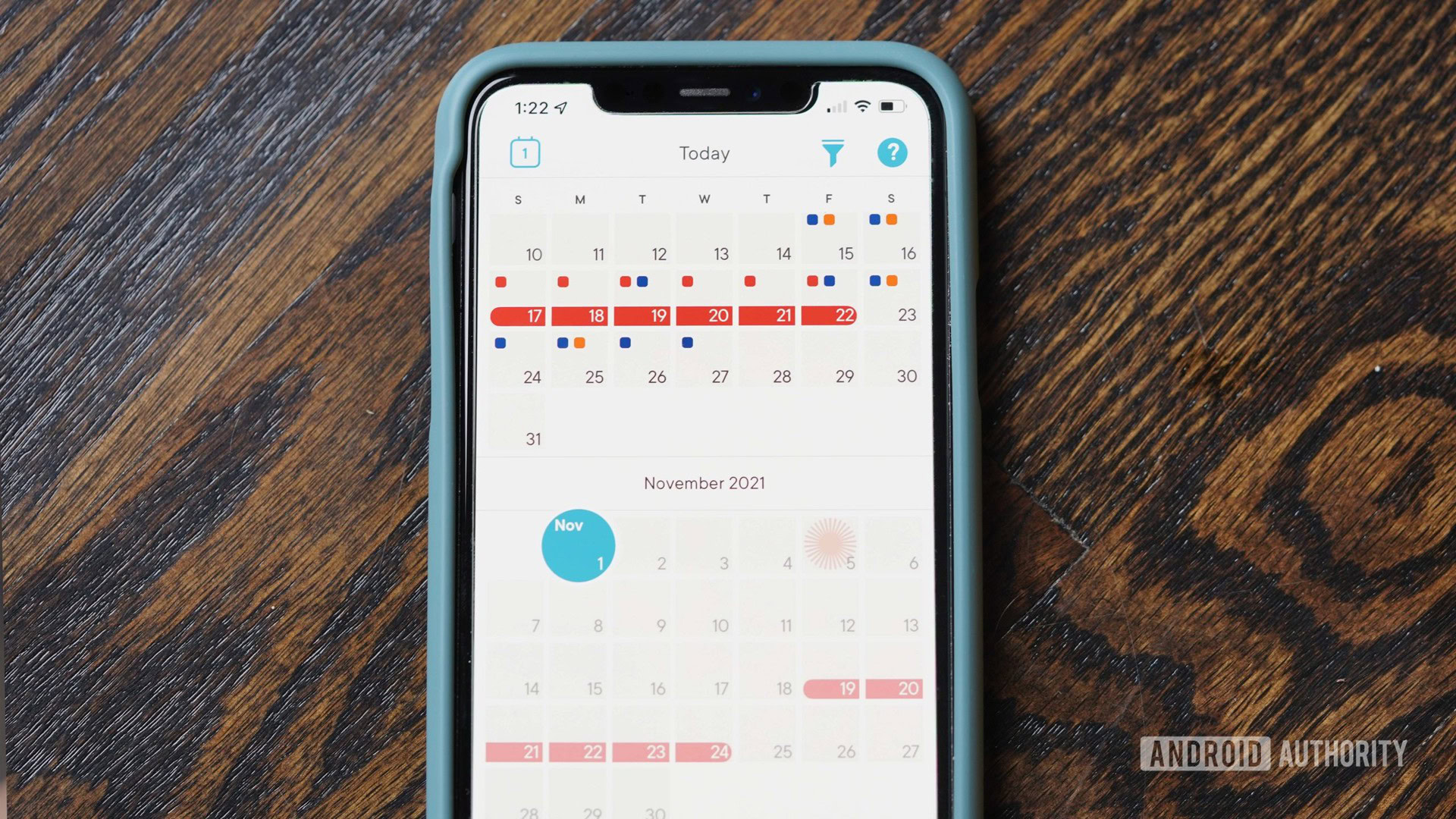
Once you create your Clue account, you can log in with your email, or an Apple, Google, or Facebook account. This is handy because, let’s be honest, we all have enough passwords to remember. Once logged in, the first thing you’ll notice is how clean the design is compared to competitors. You won’t find flowery or cartoonish details, just a simple, elegant aesthetic that’s easy to navigate. The Clue app features five main tabs, each with its own specific use and landing page.
Cycle
The Cycle tab is where you will land when you open the Clue app. Here you’ll find a circular graphic illustrating your cycle, including indicators for symptoms, a prediction of your next period, and a highlighted, potential ovulation day. You can also access the app’s overflow menu from this tab by tapping the three horizontal dots in the top right corner. This menu is where you can manage your subscription or access some additional features described later in this guide.
Calendar
The Calendar tab is helpful for reviewing your past periods or for looking ahead at predicted periods. This view makes it easy to see patterns in your symptoms, flow, and ovulation, keeping white pants everywhere a little safer. If you tap the calendar icon in the top left corner, it will automatically scroll your screen back to the current date. It’s worth mentioning that Clue’s period tracking is extensive, and you may find your calendar peppered with icons and colors. If this happens, the question mark in the top right corner of the Calendar tab provides a helpful key to remind you what each indicator represents.
Track
The Track tab is at the heart of Clue’s functionality. Represented by an encircled plus symbol, this tab is where users input all of their data, including bleeds, symptoms, activity, and more.
Clue has dozens of tracking categories you can add or disable based on your personal cycle.
Clue’s tracking categories include Period, Body, Vitality, Activities, Medical, and Other. Under each category are subgroups with specific, trackable symptoms. For example, under Body, you can enable the category Pain. This will add Pain to your Track tab screen and allow you to add cramps, a headache, ovulation, or tender breasts to any day you experience these symptoms. You can toggle off any categories that don’t apply to your cycle to minimize crowding up your calendar and to get to the ones you use more quickly.
At the top of the Track tab is a swipeable, weekly calendar that allows you to retroactively add symptoms to any day. To add a symptom, simply tap the relevant date, tap a category, and finally, tap the symptom. Again, you can always tap the calendar icon in the top left corner of this tab to automatically return to the current date.
Analysis
The Analysis tab is where users review their menstrual history and menstrual trends. A snapshot view of your cycle history offers an easy way to identify variations from month to month. Additionally, an expanded view lets you take a closer look at symptoms.
Review recurrent symptoms on this tab to find out what patterns you might be experiencing. A symptom will be listed under Your recurrent symptoms if it has been logged during at least three cycles in a row. If you tap on a symptom listed in this section, you will see a new graphic specific to its data and find predictions for when you may experience the symptom next. Reminders for these specific symptoms can also be enabled from this location.
Content
The Content tab is home to a library of in-depth articles and FAQ forums related to all things menstrual cycle. This content is heavily backed by medical and scientific references to provide the most accurate information possible to Clue users. The resource database available in this tab is one of the features that sets Clue apart from other period tracking apps.
Clue Connect, tracking mode, and reminders
From the Cycle tab, tap the three dots in the top right corner of the screen to access even more features of the Clue app.
- Clue Connect: If communication is key, Clue has you covered. Users can share their cycle and ovulation data in Clue Connect. This feature is great for keeping your partner clued in (pun intended) to where you are in your cycle. It’s also been used by professional athletes and coaches, tailoring training to the cycles of individuals or even entire teams.
- Tracking mode: Toggle between Clue Period Tracking and Clue Pregnancy to select the mode that aligns with your life. In Clue Pregnancy mode, pregnancy tracking categories and weekly content replace period-related resources and cycle tracking. Users will actually find a whole new home screen for tracking their progress. This mode even tracks the growth of a new baby once the child is born.
- Reminders: Clue offers the ability to enable reminders for different actions related to your cycle. These include notifications for upcoming periods, missed periods, and ovulation as well as PMS. You can also enable reminders to take birth control, track basal body temperature (BBT), or check in with Clue.
Clue Plus
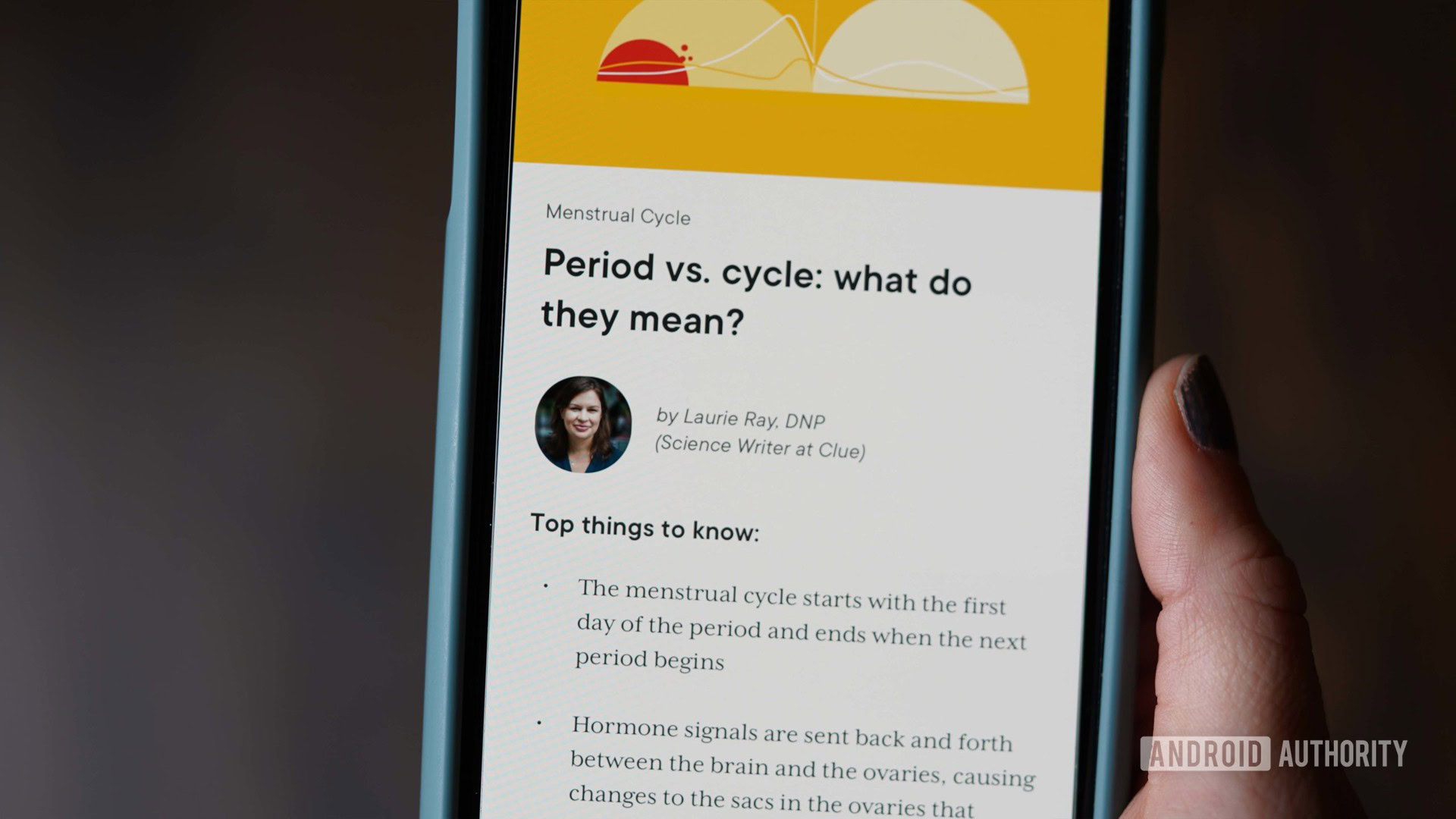
The free version of Clue is a great period tracker and women’s health tool on its own. However, you can get even more out of a Clue Plus subscription. The top features accessible only to subscribers include the following:
- Monthly emails with cycle updates and summaries
- Unlimited access to articles and resources in the Content tab
- Pregnancy mode’s topical tracking categories and weekly updates
- Six months of period predictions (double the amount available in the free version of the app)
- Recurring symptom analysis
If you opt to stick with the app’s free features, you will need to ignore the excessive Clue Plus ads and banners throughout the app. These alone can be tedious enough to prompt you to pay up. That being said, even compared to other tracking apps like Flo, the free version of Clue has a lot of strengths and might be all you need.
Devices compatible with the Clue app
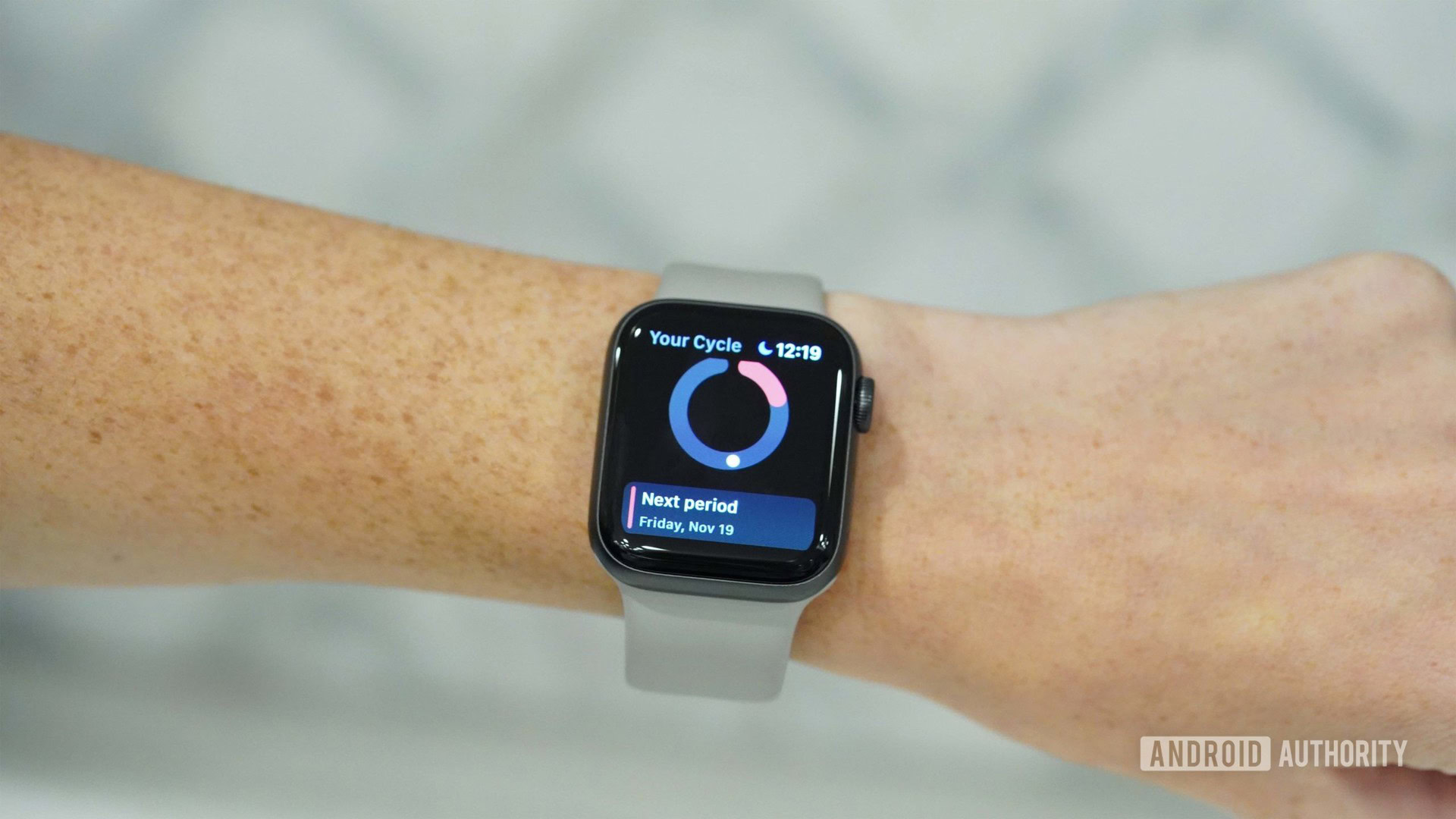
The Clue cycle and period tracking app is compatible with Android phones running Android 5 and up. For iPhone users, it is compatible with phones running iOS 13 or later. You can also use Clue on your Apple Watch to get updates and alerts right on your wrist. Unfortunately, there isn’t yet a Wear OS app for Clue. The app also isn’t yet supported by Google Assistant, Alexa, or Siri integrations, which we would love to see in the future.
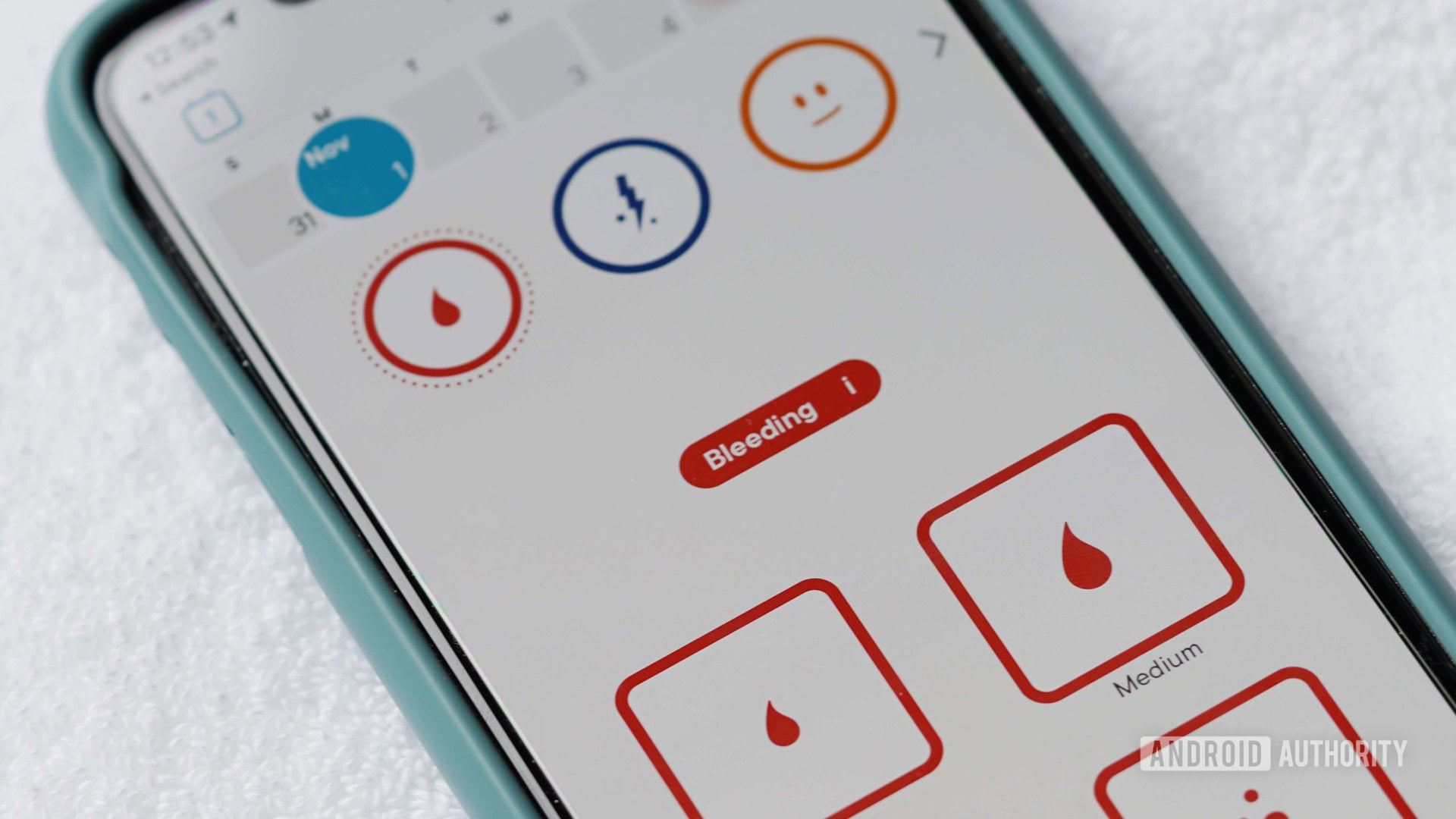
Overall, Clue is one of the best period and ovulation tracking apps available. Its simple to use, intuitive, and scientifically backed. Not only does it help users accurately predict periods, but it also tracks an extensive number of symptoms. Plus, it keeps learning from the data you provide so that in the end, the more you track, the better the app gets.
Frequently asked questions
Q: Is the Clue app free?
A: Downloading the Clue app is free, as are the app’s basic features. Accessing some of Clue’s more advanced features requires a subscription.
Q: Can the Clue app track pregnancy?
A: Yes! The Clue app offers a Clue Pregnancy mode that tracks a variety of categories including your progress, bodily changes, cravings, moods, baby movement, and more.
Q: Can you share the Clue app with a partner?
A: You can share the Clue app (including your personal tracking data) with your partner using Clue Connect. This feature allows your partner to view your past, current, and predictive periods, your fertile windows, and PMS.
Q: How do you reset the Clue app?
A: To reset the Clue app, open the app’s overflow menu and tap Support. Tap on Account & Data, then scroll down to and tap How can I delete my account? Follow the onscreen prompts to delete your account. You will need to enter your password to complete this action.
Q: How accurate is the Clue app for ovulation?
A: The Clue app is consistently rated as one of the best apps for accurate ovulation tracking. However, these prediction tools are intended for educational purposes only and should not be used for birth control.